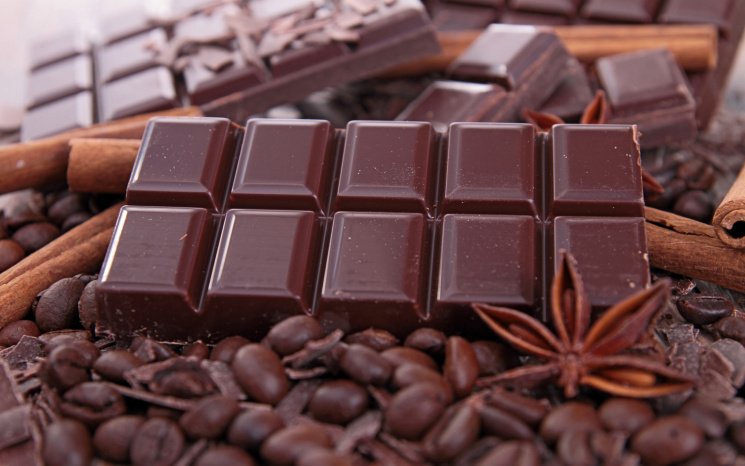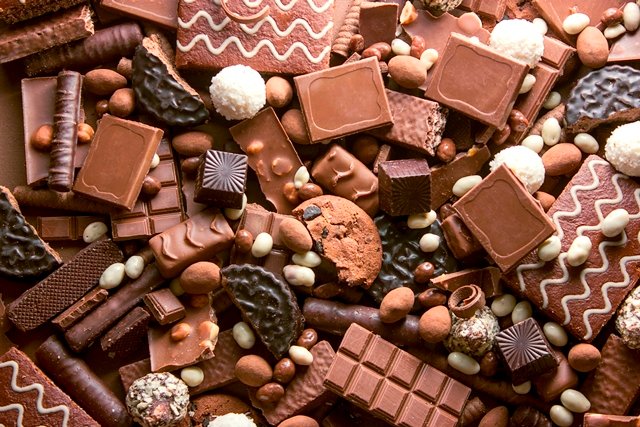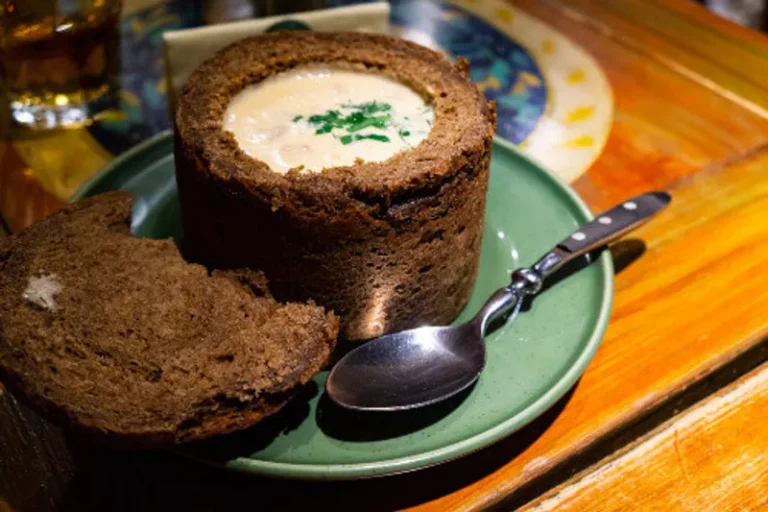What we eat has a significant impact on our mood. Foods in which this effect is particularly evident are considered “mood food”. In this article, you will find out what these are and how they increase well-being.
What is mood food?

Foods that can influence a person’s mood are called “mood foods”. Some hormones are responsible for and influence our feelings and moods. In order to produce hormones such as serotonin, dopamine or oxytocin, the body needs special building blocks. Foods that contain a particularly large number of such substances can therefore function as mood food.
If the brain is not supplied with enough nutrients, this becomes noticeable through mood swings, lack of concentration or even depressive moods. Many foods contain nutrients that our brain needs for all its functions. Magnesium, thiamine, vitamin B6 and folic acid are particularly important for a well-functioning nervous system. Viewed in this way, basically all healthy, nutrient-rich foods can be mood foods.
Good to know: You will often find the term “soul food” synonymous with mood food. That means something like “food for the soul”. This term originally comes from the Afro-American culture in the USA, when slavery still existed there. At that time, food often consisted of cheap foodstuffs that were prepared with fat, salt and sugar to make tasty and high-calorie dishes. Food should bring comfort to the soul. Regardless of this original meaning, soul food is now used differently and partly as a synonym for mood food – for food that lifts the mood.
Serotonin as the most common active ingredient behind mood food
One of the most important substances associated with mood food is said to be serotonin. It is both a neurotransmitter and a hormone: as a messenger substance, it transmits information between nerve cells. Serotonin acts in the central nervous system, blood, cardiovascular system and digestive tract. For example, it ensures smooth digestion by increasing intestinal peristalsis. Serotonin is also important for healthy sleep and a good memory. So it has a variety of tasks.
Serotonin is colloquially known as the happiness hormone. In a way, that’s true, but the term is a bit misleading. The hormone does not make you feel euphoric or overly happy, but it creates a general sense of well-being and makes you happier.
For the synthesis of serotonin and to benefit from its effects, the body needs the following substances:
The amino acid tryptophan – it is mainly contained in soybeans, dairy products, Brazil nuts, plums or bananas.
Carbohydrates – They are important for tryptophan transport and absorption in the brain.
Magnesium – you can find the mineral in cocoa, broccoli, wheat bran and sunflower seeds, for example.
In order for Mood Food to work, you have to get everything you need with the food you eat. Tryptophan has difficulty getting through the so-called “blood-brain barrier” on its own. At this point, several amino acids compete for uptake in the brain. Carbohydrates make it easier for tryptophan to access it: Carbohydrates increase insulin in the body, which in turn increases the uptake of amino acids into the cells.
Overall, an ideal mood food is primarily a combination of carbohydrate-rich foods and foods that contain a lot of tryptophan. In addition, omega-3 fatty acids and vitamin D influence the effects of serotonin in the brain.
Which foods are mood foods?
Dark chocolate
Very popular and rich in tryptophan: the mood food chocolate, preferably vegan. Sugar is present as an accompanying carbohydrate. Cacao also contains caffeine and theobromine, a caffeine-like substance. Both have a stimulating effect and lighten the mood. The higher the cocoa content in the chocolate, the better.
Milk chocolate contains a lot of sugar in relation to cocoa. This can also cause a mood high, but more because of the increased blood sugar level. In the long run, this is not healthy and poses health risks. Don’t eat too much dark chocolate either. It is best to choose fair trade chocolate from organic farming.
Nuts and seeds
Nuts contain a lot of magnesium, are rich in B vitamins and contain trypotphan, which is important for the formation of serotonin. They are a great mood food for stress: the magnesium promotes communication between the nerve cells. A deficiency manifests itself in nervousness and concentration problems. B vitamins are particularly important for strengthened nerves.
Whole grain bread
It contains tryptophan, complex carbohydrates and is rich in important minerals such as iron and magnesium. All in all an effective mood food and a simple nutritional basis.
Other foods that are high in tryptophan include:
soybeans
cashew nuts
peanuts
lenses
oatmeal
curd
Spicy foods
The capsaicin contained in chillies and hot peppers provides the strong, burning sensation in the mouth when eating. Our body reacts to this feeling with a pain reaction: it releases endorphins, another happiness hormone. They have an analgesic, stress-relieving and euphoric effect. Pepper contains piperine, ginger contains gingerol. Both have a similar effect to capsaicin.
Omega-3 fatty acids in food
Mood food also includes foods with essential omega-3 fatty acids. Oily sea fish, flaxseed and flaxseed oil, walnuts and walnut oil contain particularly large amounts of them. The consumption of fish is generally ecologically very problematic.
Saffron
The expensive and exotic spice has been well researched in terms of its positive health effects and can even be used as a medicine. It has been scientifically proven that saffron can help against depression due to the crocetine it contains. If you want to cook with saffron, save it for special occasions. It is very expensive and not regional.
Probiotic Foods
A lot of research is currently being done on how the gut and the psyche are connected and some things have not yet been definitively investigated. But many results indicate that a healthy intestinal flora is also noticeable in a generally better mood. The RND reports in an article from November 2021 that serotonin is largely produced in our intestines and that intestinal bacteria can promote production.
A recent Belgian study found that the composition of the microbiome in depressed people typically differed from that in healthy people. They lacked certain types of gut bacteria. Probiotics and prebiotic foods help to rebuild and strengthen the intestinal flora.
Healthy and sustainable food as mood food
The best mood food is still a balanced and healthy diet. If you feel comfortable in your body and it is provided with everything it needs, then this also affects your mood. An interesting example from research shows how much a healthy diet influences mental health: A 2017 Australian-New Zealand study followed depressed test subjects for three months. In the group that ate healthier, almost a third of the people were no longer depressed. In the control group it was only eight percent.
Knowing about the foods mentioned above is an opportunity: we can, to a certain extent, determine how we feel and support ourselves with food choices in stressful and difficult times. The influence of food on our mood is great, but of course not the only decisive part. You should always be aware of that. There are many factors that come into play for a healthy and happy life.
Also note that many mood foods are less suitable for everyday nutrition from a sustainable point of view. Exotic foods should not be seen as commonplace. Of course you can also eat chocolate or cashew nuts, but you should pay attention to the amount and origin. The same applies to products of animal origin: not in excess, preferably regionally and from organic farming. When your food is responsibly sourced and made without suffering, you can enjoy it with a clear conscience.
Recipe: Vegan Good Mood Breakfast

The following recipe is a simple vegan example of how you can combine mood foods and integrate them into your everyday life. The ingredients used contain everything your body needs to produce serotonin, keep your nerves strong and support a healthy intestinal flora: tryptophan, magnesium, carbohydrates, omega-3 fatty acids from walnuts and probiotic bacteria from soy yoghurt. A cup of fresh ginger tea, for example, goes well with this.
Ingredients:
1 banana
1 handful of walnuts
20 dark vegan chocolate
50 grams of rolled oats
150 ml soy yoghurt
Directions:
Slice the banana and chop the walnuts into small pieces.
Grate the dark chocolate with a suitable kitchen tool or chop it up with a kitchen knife.
Put the oatmeal and soy yoghurt in a bowl along with the chopped ingredients and enjoy your breakfast.

